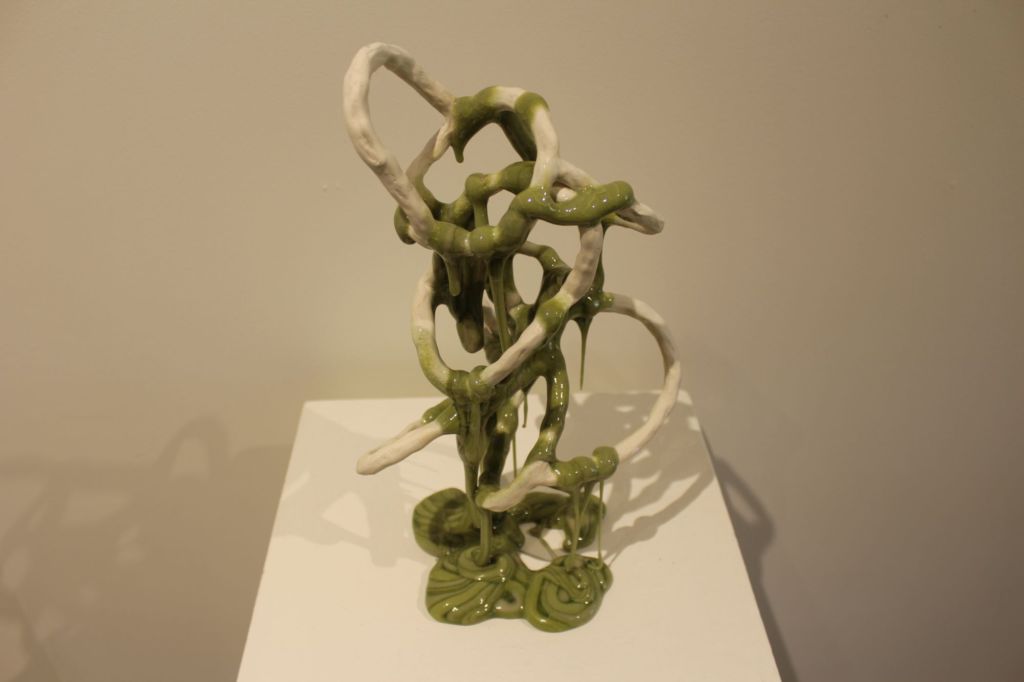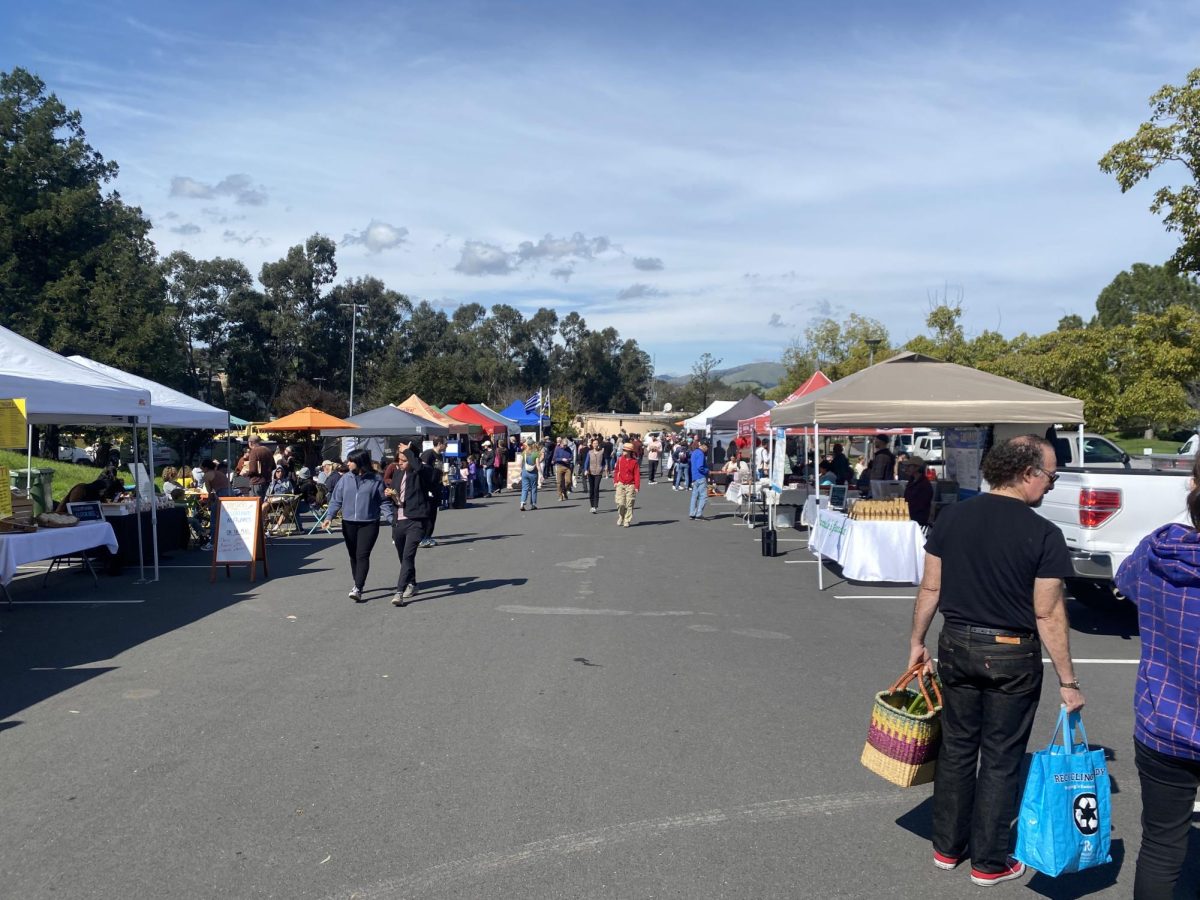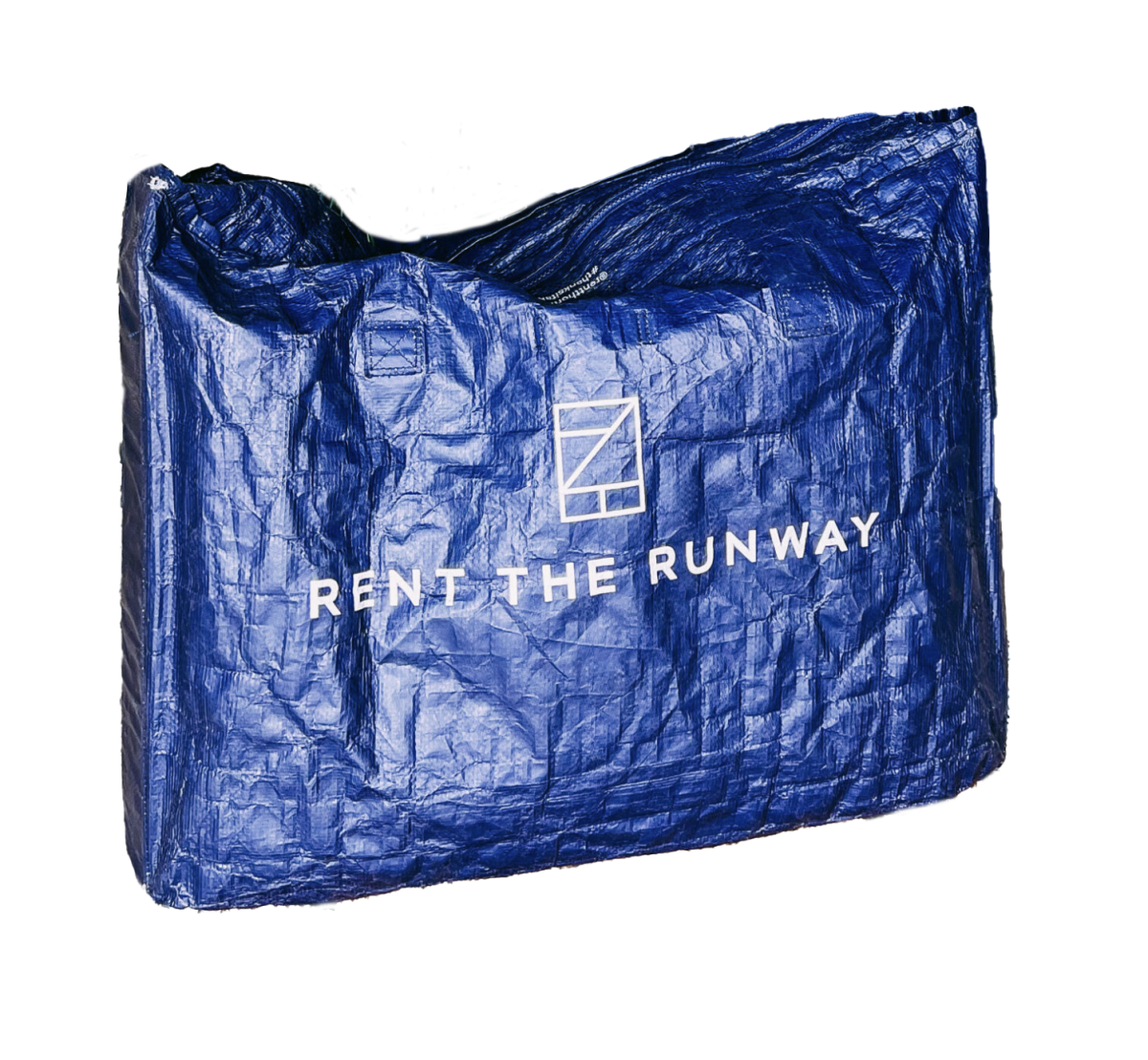Did you know there’s a modern art museum in Marin? I didn’t either, until I recently visited the Marin Museum of Contemporary Art (MOCA) in Novato to see a temporary exhibition featuring up-and-coming local artists.
The museum is housed in a mission-style building in Hamilton Field. The interior has the same California feeling as the exterior, with bright, airy cream walls, Spanish tile floors and wooden beams on the high ceilings. Rather than being intimidating and lacking natural light as one usually experiences in museums, MOCA offers a refreshing and uplifting atmosphere.
The exhibit of Emerging Artists of Northern California is located in the main gallery of MOCA. It highlights the work of five artists, each of which offers a strikingly unique artistic interpretation. The exhibit begins with the colorful collages of Andrea Bergen. Like most of the artists in the exhibit, Bergen is a young local artist. She received her Bachelor of Fine Arts degree in 2013.
The texture of Bergen’s work is so compelling that I found it hard to resist touching it—she layers hundreds of bits of paper to create images, and one can see the sculptured depth this layering effectively creates. Bergen’s work is typically centered on playful animal images but upon longer reflection, you will see the darker themes of an imploding human world in the background.
Bergen explains that her work demonstrates her anxiety about climate change and humanity’s footprint on the environment and wildlife in the plaque adjacent to her artwork. Her collages represent her expectation that animals will take over the world in the future, but she uses bright and vivacious colors and themes to depict this message in a lighthearted way.
The exhibit is set up for the visitor to meander from one artist to the next, room by room. The second artist, Shannon Abac, uses ceramics to express her creativity. Abac received her Masters of Fine Arts degree from San Francisco State University in 2016.
Abac’s ceramic pieces are purposefully unexpected and messy, yet surprisingly fascinating in their seemingly ongoing state of half formation. In the plaque describing her work, Abac says, “The unexpected, the mistake and failure are sources of innovation that lead to unforeseen possibilities in my work.” Her attempts to control the uncontrollable are compelling to behold.
I walked into the third artist’s exhibit and thought I was in the wrong room. There were several very large, very stained strips of silk fabric hanging from the ceiling to the floor. But it turns out Katie Revilla’s art centers on textile-based images, in this case reflecting the rust stains of well-used farm tools. Revilla is a young artist who only just graduated from University of California Berkeley. Her immigrant family’s long heritage of farm labor is symbolized by the process of the metal alloys from the rust eating away at the silk hangings and changing the stain imprints over time. While the metaphor is striking, large pieces of stained fabric are not necessarily aesthetically appealing.
The last two exhibits were more strange than captivating. The next artist, Aida Lizalde, is currently a student at University of California Davis. Her medium is clay, and she sometimes uses her own body to sculpt the clay. She actually will reside in the clay forms while creating them, often as an exercise in endurance and discomfort. I couldn’t help staring at one piece that clearly held the imprint of a human body, but that was the only piece that held my interest.
The final artist, Philip McGaughy, used film, lighting and sound to attempt to convey his message of a planet in peril. However, his film of a tidal flow and someone digging in the sand was too long, and the imagery was boring.
The city of Novato dedicated the current location to MOCA in 2000. According to the museum brochure, MOCA houses working studios for over 55 artists along with the main gallery. MOCA does not charge admittance although a $10 donation is suggested since it does not receive any government funding. The exhibition began September 2nd and ended October 8th.
If nothing else, this exhibit will broaden your definition of art. These artists’ imagination are laudable and, in some cases, truly striking. This small but eye-opening exhibit was well worth the hour I spent to view it.


















